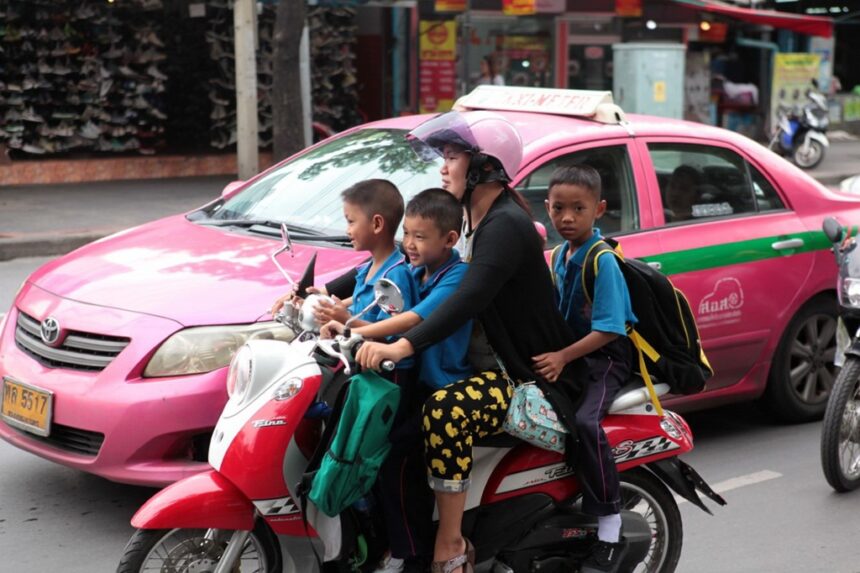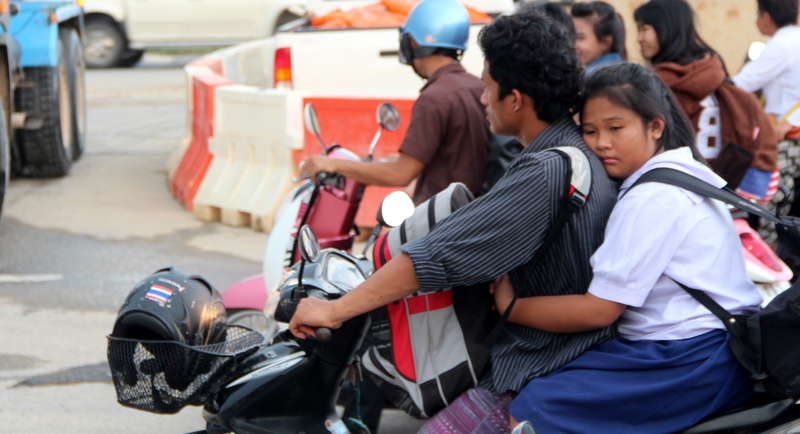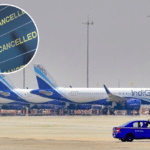BANGKOK – The Royal Thai Police (RTP) announced a new campaign, “Safe Roads Project,” aimed at cutting the high number of motorcycle deaths across Thailand. Starting 1 June 2025, all riders and their passengers caught without a helmet will be fined up to 2,000 baht.
If a helmet is present on the bike but not being worn, the fine doubles to 4,000 baht. This effort is part of the RTP’s “Safe Roads Project” to tackle the high rate of traffic deaths involving motorbikes, which are the main mode of transport for many Thais.
Police Lieutenant General Nitithorn Jintakanon, who heads the Police Education Bureau, led the announcement. He highlighted the renewed focus on enforcing Section 122 of the Land Traffic Act, which requires both riders and passengers to wear helmets.
The campaign will target busy roads, known accident spots, areas with frequent traffic violations, and locations near schools and universities. Nitithorn stressed the importance of consistent enforcement to help protect lives.
Thailand has one of the highest rates of road deaths in the world, with motorcycles involved in most fatal accidents. The Ministry of Interior reported that during the Songkran festival between 11-17 April 2025, there were 1,538 crashes. These led to 1,495 injuries and 253 deaths.
Motorcycles were involved in 77% to 84% of these cases. Speeding, drink-driving, and not wearing helmets were the main factors behind these crashes. The Road Safety Centre reported 1,377 accidents and 200 deaths in just six days of the “Seven Dangerous Days” of Songkran, again mainly involving motorcycles.
Every year, about 20,000 people die on Thai roads, with over 70% of these deaths linked to motorcycles. The World Health Organization (WHO) puts Thailand’s road death rate at about 32.7 per 100,000 people, among the highest in Southeast Asia.
Reports from the United Nations highlight that only half of motorcycle riders and even fewer passengers wear helmets all the time. Head injuries are the leading cause of death in these crashes.
Recent accidents underline the urgent need for this crackdown. In April 2025, a Singaporean motorcyclist died in a collision with a pickup truck in the south of Thailand.
A 19-year-old Australian tourist, Carlos Guirguis, lost his life in Koh Samui after coming off his bike without a helmet. Also, a British backpacker, Okemena Sule, has remained in a coma since a helmetless crash in March 2025.
These incidents show the consequences of ignoring the law, especially among tourists who may not be aware of or follow local rules.
How the “Safe Roads Project” Works
The “Safe Roads Project” focuses on improving traffic habits and lowering the number of deaths, with helmet use as a top priority. Police General Kraibhun Trawadsong, Deputy Commissioner-General, has ordered all police units to aim for full helmet compliance.
Officers will patrol busy streets, known danger spots, and areas near schools to protect younger riders. People can report violations through the Traffic Police Hotline at 1197 or the Highway Police Hotline at 1193, both open 24 hours.
Anyone found riding or riding pillion without a helmet faces a 2,000-baht fine. If a helmet is carried but not worn, the penalty is 4,000 baht. This step cracks down on a common habit in Thailand—carrying helmets to avoid fines but not using them for safety. Nitithorn stressed that having a helmet on the bike isn’t enough; it must be worn.
While many road safety groups welcome the move, the campaign will face obstacles. Helmet use varies, especially in rural places like Chiang Rai, where tradition and weaker law enforcement mean fewer people wear helmets. Some see helmets as uncomfortable or unnecessary for short journeys.
Passengers, including children, are often seen without them. Tourists sometimes refuse helmets because of a poor fit or for style reasons. Welsh tourist Lee Francis credits his helmet with saving his life in a 2024 crash in Krabi.
Reactions online, such as those from @Thenationth and @ThaiPBS on X, show a mix of support and doubt. Many praise the project as overdue, but some question if police will enforce it everywhere or focus only on cities. There are concerns that previous crackdowns faded away due to corruption or a lack of follow-through.
Global Support and International Context
The United Nations has called for Thailand to cut road deaths as part of its Sustainable Development Goals, which include halving road traffic deaths by 2030. The WHO’s 2018 Global Status Report on Road Safety noted that strict helmet laws can reduce deaths by up to 40%.
Vietnam has seen a marked drop in motorcycle deaths since introducing strict helmet rules in 2007. The RTP’s new campaign matches these global targets, but its success will depend on how well it is enforced and whether people follow the law.
In Chiang Rai, motorcycles are the main transport for locals and tourists exploring places like the Golden Triangle. With many rural roads that are narrow and poorly lit, accidents are common, and helmet use is lower than in cities such as Bangkok. Police in Chiang Rai plan to increase patrols, especially near markets, temples, and schools. The local tourism sector, which depends on scooter rentals, may have to make sure visitors are given helmets that fit properly.
The RTP’s campaign is a move towards meeting international road safety standards, but real change will need a shift in public attitudes. Raising awareness, improving license rules, and making good helmets affordable could help support this effort. For now, the message from the RTP is clear: wear a helmet or pay a fine—and, more importantly, protect your life.
As Thailand faces its road safety challenge, the “Safe Roads Project” could save thousands of lives each year. Whether it leads to lasting changes in habits will depend on what happens next, but for families affected by motorcycle accidents, the hope is that this campaign will mark a turning point.
















